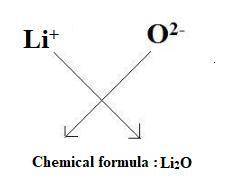

However, when tested in Martian atmosphere-like conditions (95.6 % CO2 and rest CO and O2), this efficiency jumped to 96%. When tested in a lab in a pure CO2 atmosphere, the Li-CO2 battery showed approximately 68% first cycle efficiency. The reversibility of this reaction is still not very well understood. The apparatus for a prototype of the battery (Source : CARBON Lab, IIT Hyderabad)Īn appropriate catalyst is used to ensure the reversibility of the reaction, i.e. Herein, Lithium-ions react to CO2 gas through porous carbon cathode to form Lithium Carbonate. This is in contrast with the Lithium - ion batteries where Li ions react with carbon reversibly through intercalation upon discharge/charging. The chemical equation for the reaction occurring in the battery This reaction is based on the electrochemical reduction of CO2. Li ions react with CO2 gas molecules at porous carbon cathode during discharge and form Li2CO3 (Lithium carbonate) and solid carbon.

The Li-CO2 battery system is an open system from cathode end to ensure the regular supply of carbon dioxide, which functions as an energy carrier in this battery. Since Li-CO2 based chemistry is still in its infancy, there were a lot of opportunities as well as scientific challenges to overcome and to explore. A simplistic view of the batteryĪfter a careful review of the existing trends, in conjunction with collective brainstorming, the idea of Li-CO2 batteries came into existence. Aiming to improve on the traditional Lithium-ion batteries, due to their limited energy density, the team considered expanding the research on Lithium-Air and Lithium-Oxygen batteries which were gaining popularity in the scientific community. The CARBON Lab team at IIT Hyderabad has been researching and developing batteries and supercapacitors for almost a decade. Chandra Shekhar Sharma, an Associate professor in the Department of Chemical Engineering and his team at IIT Hyderabad, serves the purpose of providing higher energy density batteries in an ecologically friendlier way. The Metal - CO2 Battery, developed by Dr. The element at the core of all life now presumably holds the key for its continuity.

In another it is one of the hardest substances and equally resistive. In one form it is very strong, flexible and highly conductive. It’s properties span the entire range of possibilities. This element is the source and the sustenance of all life. The versatility of carbon is difficult to justify with words.


 0 kommentar(er)
0 kommentar(er)
